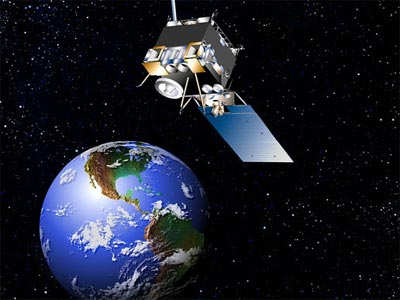Imagine reconnecting NASAby S. Alan Stern
|
| Our space program does not enjoy the strong support it once did. A part of the reason for this is that the current program is too disconnected from everyday life and American society. |
But it need not be this way. The early space program combined pioneering explorations with an impressive array of fundamental benefits to society. Consider: The space program of the 1960s, ’70s, and ’80s catalyzed the communications satellite and electronics miniaturization revolutions, unleashed environmental awareness via the first color pictures of our fragile home planet, and perched satellites in high orbit to transform weather forecasting. Each of these developments became a signature element of 21st century life, with enormous economic and social benefits.
More subtle but equally important were the foreign policy benefits of our early space efforts. One is our ability to provide land use, pollution, flood, and storm warnings to nations across the world. Another is the unabashedly positive image of America that our explorations of the Earth, the solar system, and the larger universe communicate to students across the globe.
The early space program also benefited society by inspiring an army of tech workers and entrepreneurs to careers in engineering and science, fueling many of the industries our economy now depends on.
America’s efforts in space continue to yield historic discoveries through exciting new explorations. But do they offer investment returns as great as those spawned in the first decades after Sputnik? And do they motivate and inspire our youth as deeply as they did the youth of the 1960s, ’70s, and ’80s? Unfortunately, it seems not, to the great detriment of both NASA and space exploration.
The coming new year presents an opportunity to reemphasize the immediate societal and economic returns NASA generates, so that no one asks, “How do space efforts make a tangible difference in my life?”
The new administration could accomplish this by combining NASA’s space exploration portfolio with new and innovative initiatives that address hazards to society, make new applications of space, and foster new industries.
Such new initiatives should include dramatically amplifying our capability to monitor the changing Earth in every form, from climate change to land use to the mitigation of natural disasters. Such an effort should also accelerate much needed innovation in aircraft and airspace system technologies that would save fuel, save travelers time, and regain American leadership in the commercial aerospace sector. And it should take greater responsibility for mitigating the potential hazards associated with solar storms and asteroid impacts.
So, too, a more relevant NASA should be charged to ignite the entrepreneurial human suborbital and orbital spaceflight industry. This nascent commercial enterprise promises to revolutionize how humans use spaceflight and how spaceflight benefits the private sector economy as fundamentally as the advent of satellites affected the communications industry.
Such a retooled NASA could also serve an educational purpose—inspiring a new army of students and young workers to careers in technology fields, further fueling America’s economy into the 2020s, ’30s, and ’40s.
Such a newly relevant and responsive space effort need not add to the federal government’s financial burden. In fact, it could be financed entirely from the savings produced by a strong emphasis on cost overrun control in the nation’s current civil space budget—estimated to be several billion dollars per year.
| Imagine a real 21st century space program, rather than one frozen in 1960s paradigms. |
With an aggressive effort to generate new resources from cost control, NASA could literally transform our understanding of environmental threats; open up human spaceflight to tourism, industrial research, education, and entertainment; and help revive our flagging airline industry. In fact, with such newly generated internal resources—but still spending roughly half a penny from every federal dollar as it does today—NASA could also accelerate its historic exploration of the solar system and the universe.
Imagine this different, stronger, more efficient NASA, as historic an explorer as it has always been, but newly responsive to how space can better connect to our society, our economy, and our home planet. Imagine a real 21st century space program, rather than one frozen in 1960s paradigms. Imagine our space program making history again, inspiring a nation and the world again. Imagine this happening next year. It’s easy if you try.
